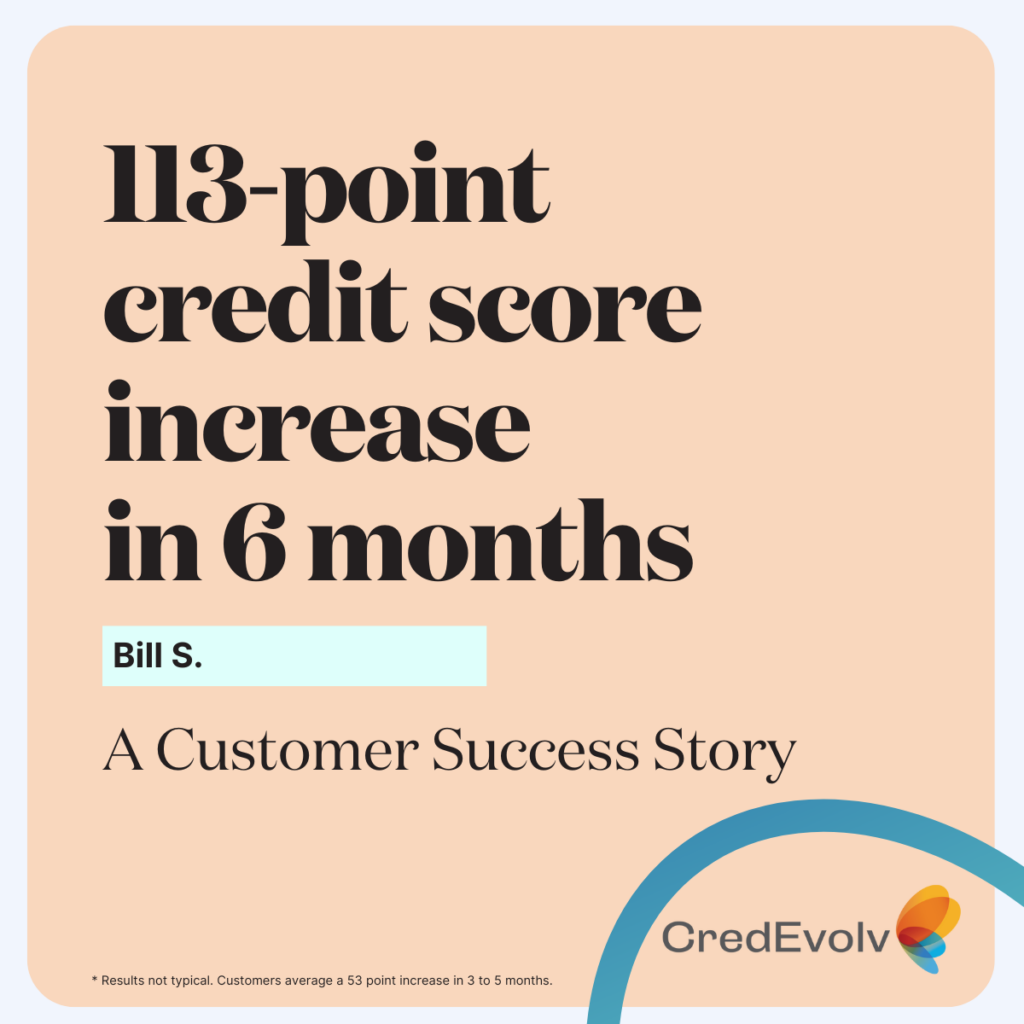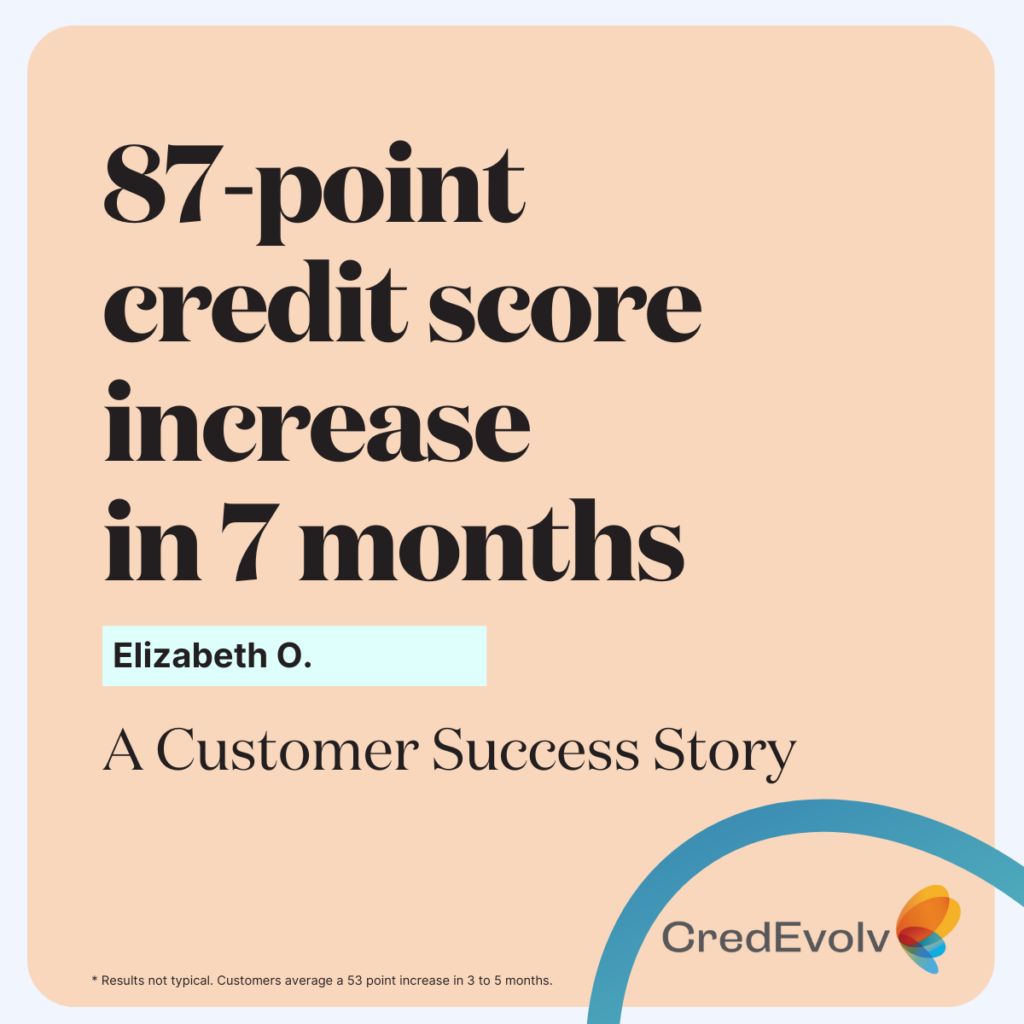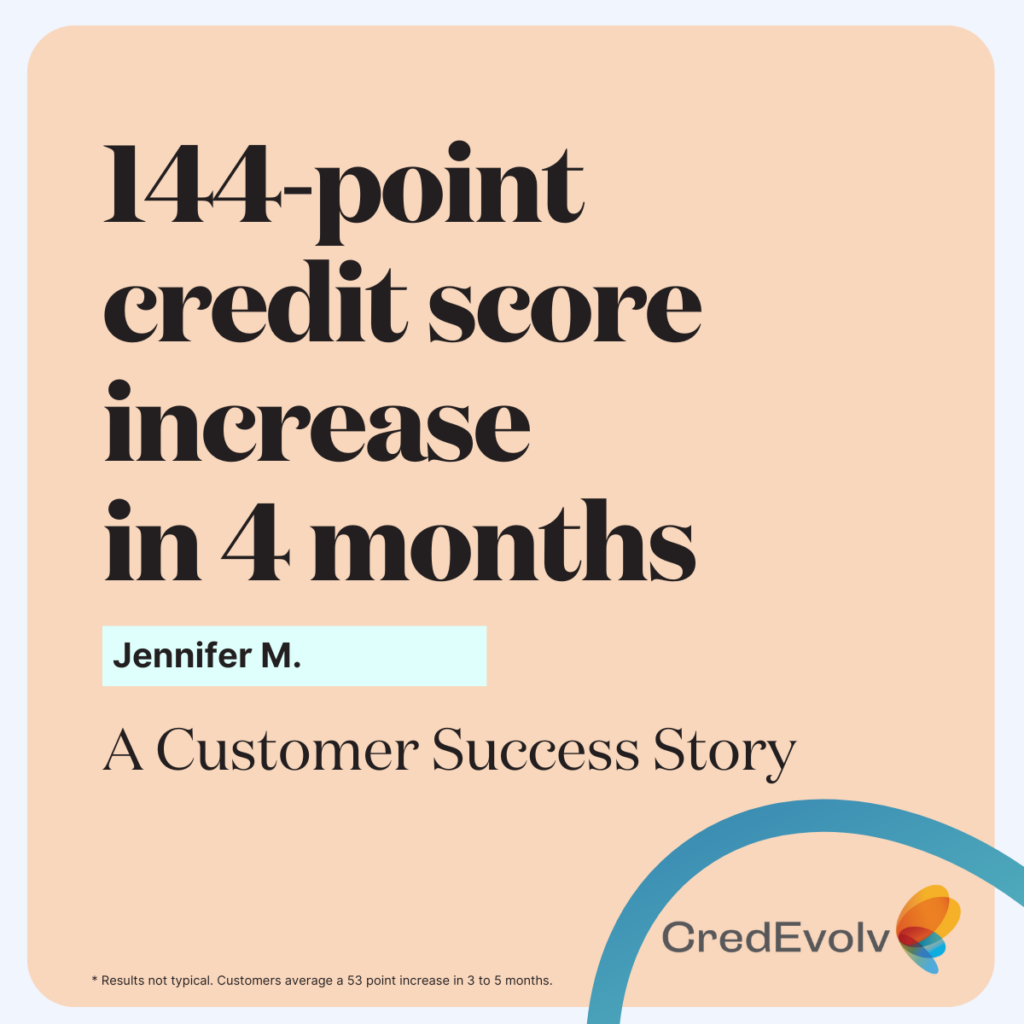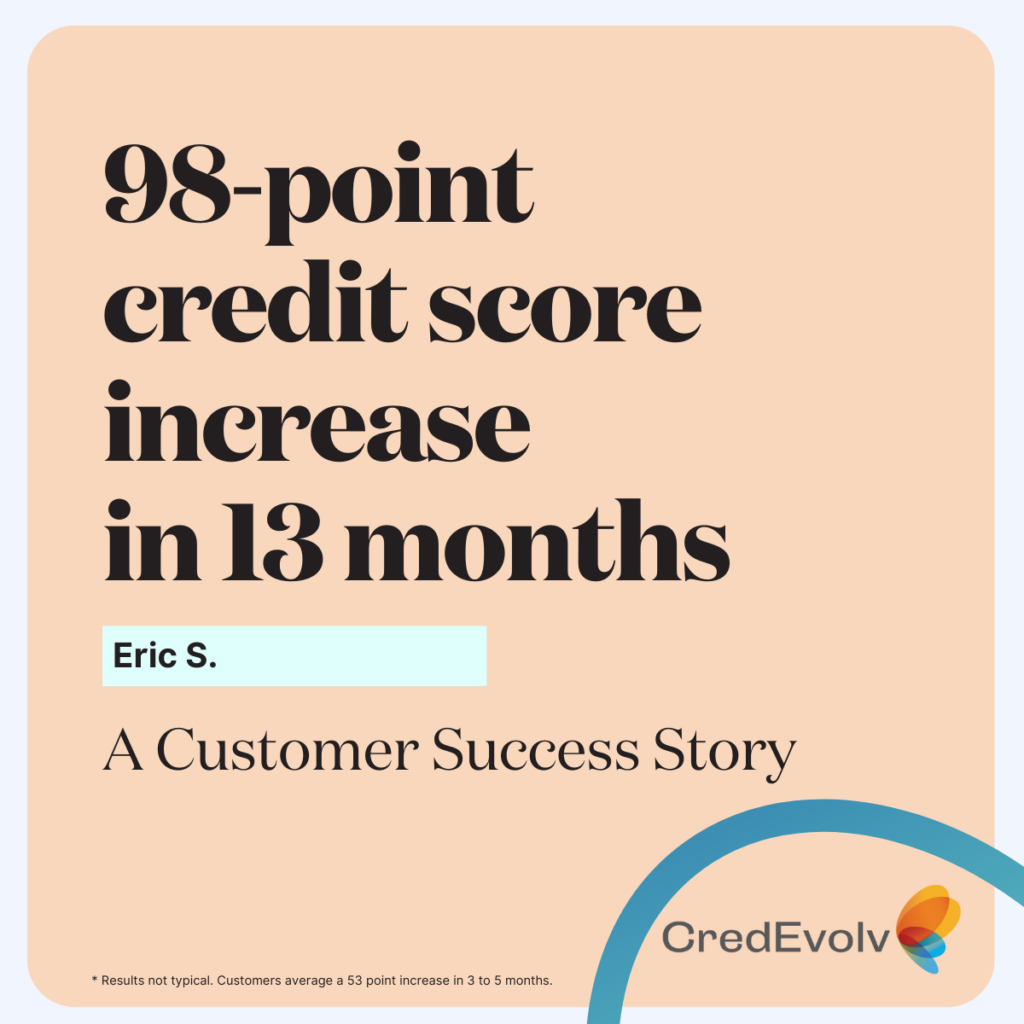Credit scores are comprised of three digits. If you can achieve a three-digit increase in a 435 credit score, you’re making amazing progress.
Joseph R. can confirm that firsthand!
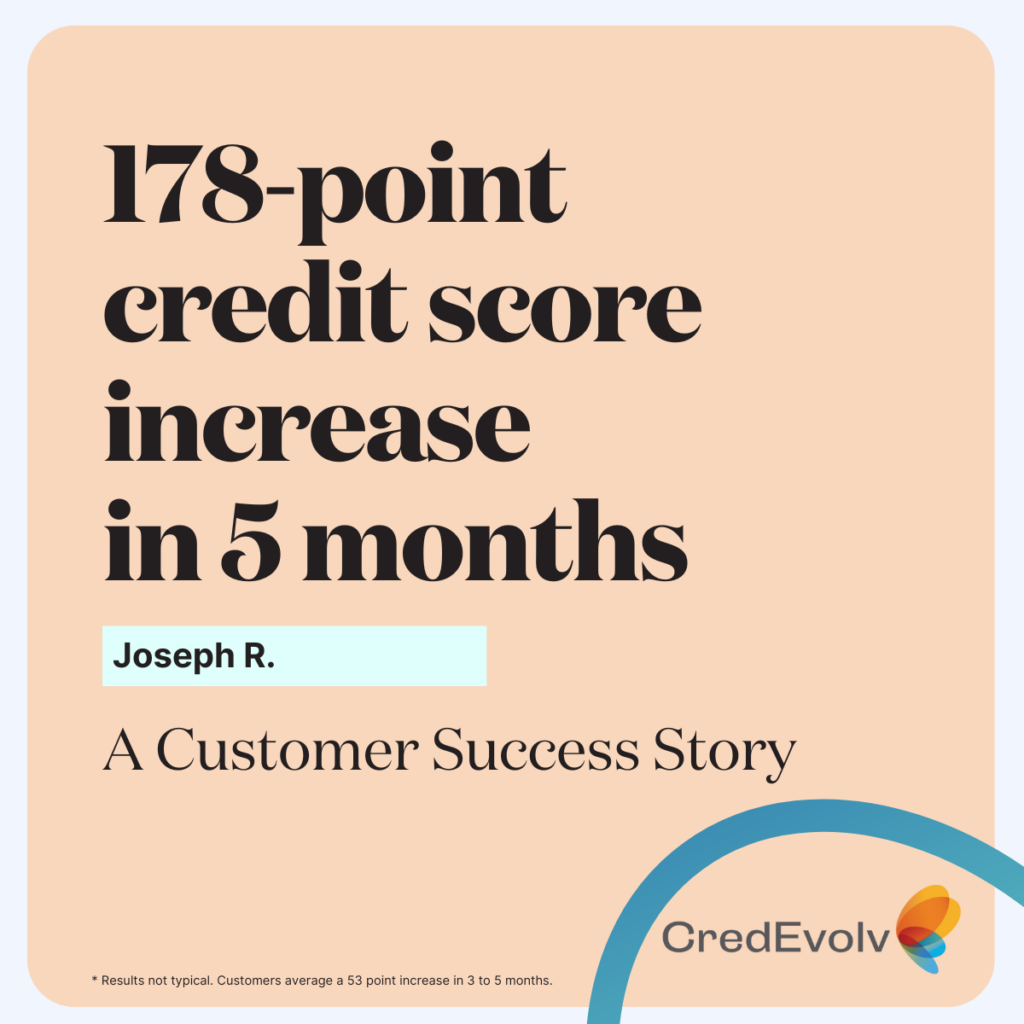
Joseph had a 435 credit score and some collection accounts on his credit report when he enrolled in the CredEvolv platform. His personal credit counselor taught him how to create a budget so he could pay down his credit card balances. Meanwhile, the counselor challenged and successfully removed three collections. In 5 months, Joseph’s 435 credit score jumped to 613, exceeding his goal of 600 and closing in on his mortgage lender’s minimum of 620!
“What is credit utilization and how does it impact my 435 credit score?”
Credit utilization means the percentage of your available revolving credit that you’re currently using (this blog shows you how to calculate your utilization ratio). Because it makes up roughly 30% of your credit score, credit utilization is significant to a lender’s decision when you apply for a loan or credit card.
This ratio is how lenders gauge your ability to manage credit responsibly without relying on it excessively. A high credit utilization ratio may result in a rejection of your credit application. A low utilization ratio indicates that you’re less dependent on credit and can make it easier to receive loan approvals.
Try to keep your credit utilization ratio below 30%. Even better, keep it under 10%.
Even if you’re paying your bills on time, your credit score can still take a hit if your utilization is too high. But when you adhere to the aforementioned recommendations, your 435 credit score can jump like Joseph’s did!
“What can and can’t be removed from my credit report?”
One of our Credit Education blogs clarifies this common question. Here’s the answer again: improving your 435 credit score isn’t about deleting your financial past. It’s a matter of legitimately correcting inaccuracies and gaining better borrowing habits.
There are many myths about credit repair. Some companies advertise their ability to get rid of everything negative on your credit report. Unfortunately, that’s not a truthful claim. The fact is, removing valid negative information is against the law.
As outlined in the Fair Credit Reporting Act (FCRA), credit bureaus must maintain only verified, accurate information. If you’ve missed a payment or defaulted on a loan, those details can legally remain on your report for up to seven years. Bankruptcies, depending on what type they are, can stay for up to 10 years.
At CredEvolv, we want to make sure you’re aware that no company or individual can legally erase truthful negative items from your credit report. You should also know that the HUD-approved, nonprofit credit counselors on our platform have the expertise to effectively challenge inaccuracies or outdated details that may be unfairly damaging your 435 credit score.
Our counselor partners are well-versed in identifying erroneous and unfair credit reporting. When they look into these issues, they make sure your credit report contains only the information that should be there. This approach, not DIYing your own credit fixes, gives you the best chance of strengthening your credit profile.
Read more credit success stories here!


